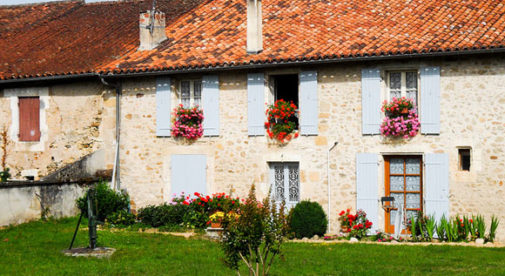Every day in my travel research I come across the terms “hidden gem,” “off the beaten path,” “unspoiled, authentic, undiscovered…” The Dordogne region of France is the only place I have been to date where it is actually true.
Castles sit like crown jewels along the river banks. My family and I often found ourselves beating our own path through the oak forests toward the river bank. The countryside looks much the same as it has for hundreds of years with emerald-green farms held down by Perigord Chateaux.
As far as authenticity goes, the gas station shop sells local pâté and foie gras. Although the Perigord Noir region we explored has been well known for decades by the English, Dutch, and Belgians as a summer home locale, there is still a preserved peace that settles over the region even in its most popular corners.

Each day you spend in the Dordogne is a feast for the senses. The earthy aroma of the dewy mornings gracefully gives way to a gentle breeze kissing the endless fields. As we canoed past the kinds of castles dreams are made of, the whoosh of the crinoline from days gone by was almost audible.
We found hermetic places to beach our boats where the aroma of goose-liver pâté, truffles, and wild walnuts perfumed the banks we picnicked.
From Beynac to Limeuil, we were surrounded by ocher fields set against new spring leaves and butterscotch-colored stone homes that look like they have graced the hillside forever. The deafening birdsong at sunset was the perfect accompaniment for our efforts to take in every last moment of light offered.
I can’t help but think that the Dordogne feels like one of those places that people hide from others once they discover it. I could not think of another reason for it not being flooded with people from every corner of the world. It is unique, timeless, affordable, and precious.

It was an everyday occurrence for me to feast on a poulet (chicken) omelette for under €5. On the rare occasion I fancied something more formal, it was effortless to find a five-course meal in a restored chateau garden, for €12 per head, including wine and coffee.
Even in these refined settings, our children were embraced and given room to run in the fields between courses while we dined. They forked hay, petted cows, sat atop vintage plows, and watched the sunset as we enjoyed a velvety cheese board, dessert, and coffee.
It was shortly after our first few culinary experiences in Dordogne, that we started looking at real estate. The chateaux are classically elegant and in high demand but can still be purchased for under a million euro—which includes expansive property and outbuildings.
We were looking for something a little more manageable and found a storybook stone cottage, on over an acre with a pool and mature garden, close to a quiet hamlet, for €250,000.

We looked at a three-bedroom, two-bathroom village house in Bergerac that was priced at €170,000. The villages were the perfect combination of modern chic and traditional and the housing options reflected this balance beautifully.
The Dordogne region was everything we wanted it to be…and so much more than we ever imagined…
[france_signup]
Related Articles
Lyon, France: Everything You Need to Know
[post_takeover]

